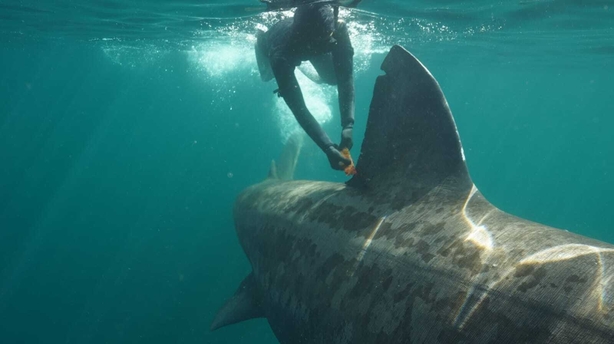A team of researchers in Co Kerry has been able to capture data detailing how endangered basking sharks respond to boat strikes.
The collaborative team of scientists from Ireland and the US fitted a mini camera to a seven-metre female basking shark off the Kerry coast.
Assistant Professor in Trinity College Dublin's School of Science Nick Payne said the cameras produce "really nice images" of what the animal sees as well as giving important insights into the movement of the animals.
Speaking on RTÉ's Morning Ireland, he said: "We can work out how fast they're swimming, what angles they're swimming on, what direction they're travelling.
"We can work out how often, how, how frequently it beats its tail, very much like a like a pedometer.
"They're amazing devices."
Researchers have been putting these devices on basking sharks in Kerry for several years.
However, the primary goal was to learn about their natural behaviour, such as feeding habits.

Mr Payne said an incident in April where one of the sharks was struck by a boat allowed the team to capture the new data.
He said that the research gathered was "quite grim viewing".
"We recorded approximately four or five hours of video before the animals were hit by the boat and then about six or seven hours after that incident and the change in behaviour of the animal was dramatic.
"Before the boat collided with it, the animal was up feeding at the surface almost constantly for about four hours, which is what they normally do when the conditions are right for them as it was that day.
We need your consent to load this rte-player contentWe use rte-player to manage extra content that can set cookies on your device and collect data about your activity. Please review their details and accept them to load the content.Manage Preferences
"But then, as soon as it was hit by the boat, it tumbled in the water. It swam very quickly, down about 40 metres deep, and it didn't then resume feeding for the rest of the day.
"So it was a very drastic change in behaviour."
Mr Payne said the device was pre-planned to pop off the animal about six hours after the boat collision naturally.
"It was planned to come off anyway, so we don't know the ultimate fate of that animal, but we certainly could see that it was quite a drastic impact on its natural behaviour."

